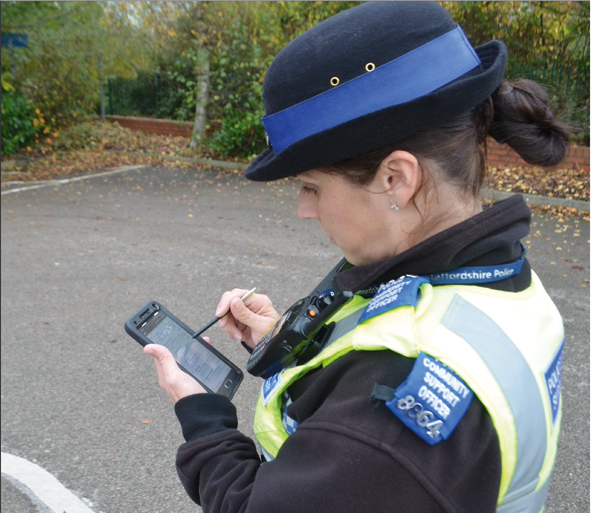Speaking the language of the street
The idea of a simple device that can instantly translate any language is the stuff of Star Trek fiction, but a hi-tech tool that enables police officers to translate and broadcast thousands of pre-recorded phrases in a variety of languages could soon find its way onto Britains streets…

The idea of a simple device that can instantly translate any language is the stuff of Star Trek fiction, but a hi-tech tool that enables police officers to translate and broadcast thousands of pre-recorded phrases in a variety of languages could soon find its way onto Britains streets…
In the immigrant-rich city of Los Angeles, police have struggled to find officers who can communicate in all the 224 languages spoken.
The Los Angeles Police Department (LAPD) believes it has now found a solution to the language of the street. It is currently trialling the latest hi-tech crime-fighting tool, the Phraselator P2, which enables officers to translate and broadcast thousands of pre-recorded phrases in a multitude of languages.
The VoxTec-developed translation technology enables frontline officers to communicate instantly in crisis situations, providing immediate and accurate translation of potentially life-saving and order-restoring phrases to those with little or no understanding of English.
Officers can use the Phraselator to interview witnesses at crime and accident scenes, control unruly and potentially dangerous crowds and perform standardised procedures such as roadside checks and serving arrest or search warrants.
The Phraselator doesnt attempt voice-to-voice translation. Instead, translators load standard police commands and questions into the devices computer memory. These translations can then be retrieved and broadcast by a simple English-language text or voice word search. English phrases can be output in hundreds of different languages.
The LAPDs interest in the device followed last years MacArthur Park melee when a disturbance blamed on communication difficulties led to injuries to around 250 protesters and journalists and 18 officers. As the department retrained officers to avoid a repeat of the situation, the Phraselator was identified as a way to reach out to non-English-speaking groups the first force globally to take the device out onto the beat.
The device was developed with the backing of the Defense Advanced Research Projects Agency and used in Afghanistan and Iraq by American soldiers communicating with people in Farsi, Dari, Pashto and other languages.
The system isnt a complete answer to communication breakdowns at the moment the translation function is one-way; it can issue orders but cant decipher responses.
VoxTec Vice President Ace Sarich, who developed the Phraselator, said officers can use the device to ask basic questions, such as what happened here? and record responses for translation at the station. This is a valuable function for frontline officers performing critical tasks such as crime, arson or accident scene witness interrogations, or overall booking procedures.
Lee Morin, a doctor in the US Navy, came up with the concept for the Phraselator during Operation Desert Storm, uploading Arabic language phrases to his laptop computer for playback to patients.
He took the idea to Mr Sarich, a former Navy SEAL and engineer, who initially developed the rugged, weatherproof device.
The Phraselator is a small PDA-sized device. It does not produce synthesised speech but instead plays pre-recorded foreign language MP3 files. Users can select the phrase they wish to convey from an English list on the screen or speak into the device. It then uses speech recognition technology called DynaSpeak, developed by SRI International, to play the proper sound file. The accuracy of the speech recognition software is over 70 per cent according to software developer Jack Buchanan. The device can also record replies for translation later.
The P2 offers three translation modes: Voice-activated speech input using the Push-to-Talk button; tap the desired phrase on the touchscreen; or use the toggle button to scroll and select the desired phrase.
Language translation can be conducted right out of the box the P2 does not require voice training before use.
Built-in acoustic tec


